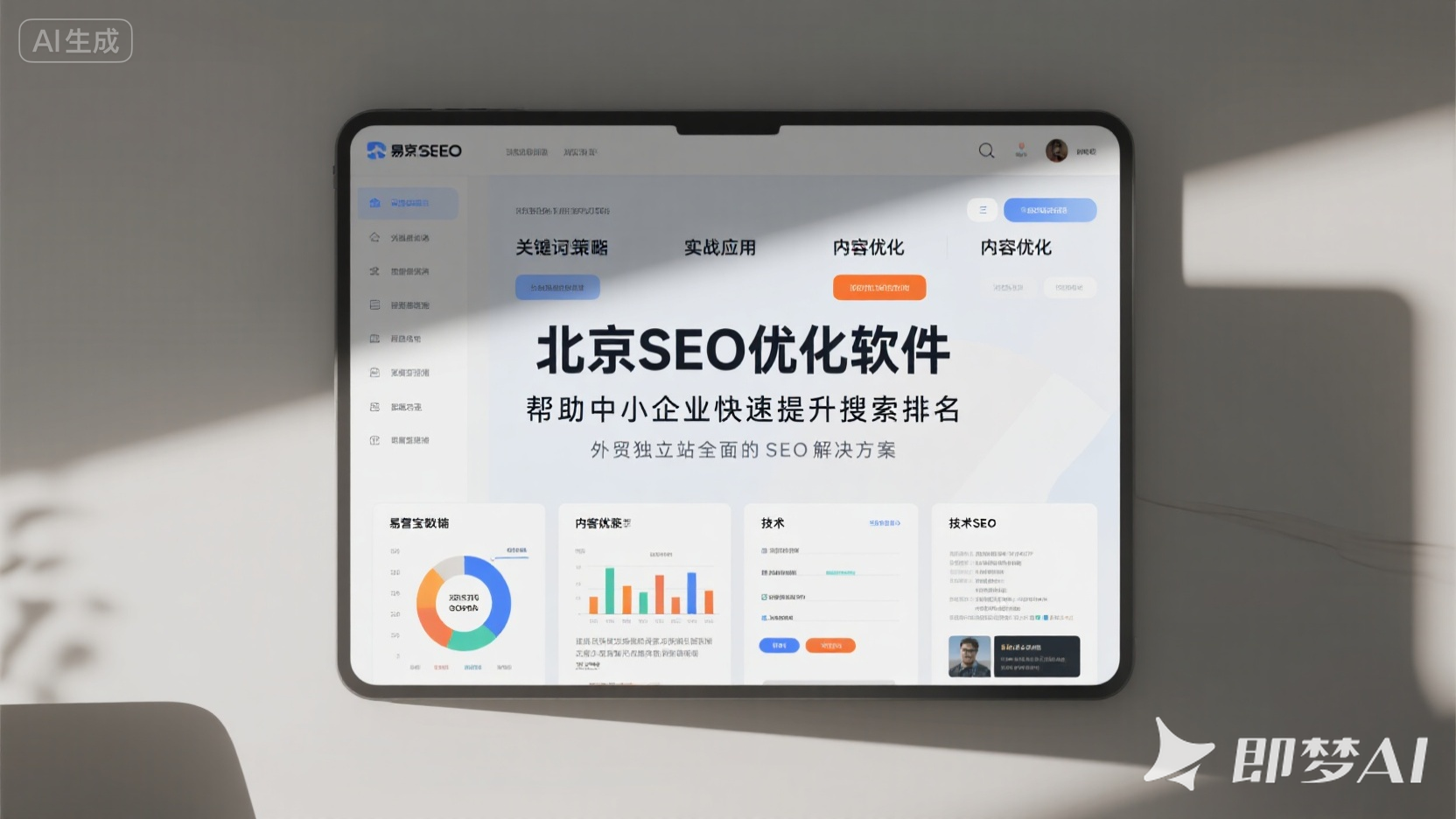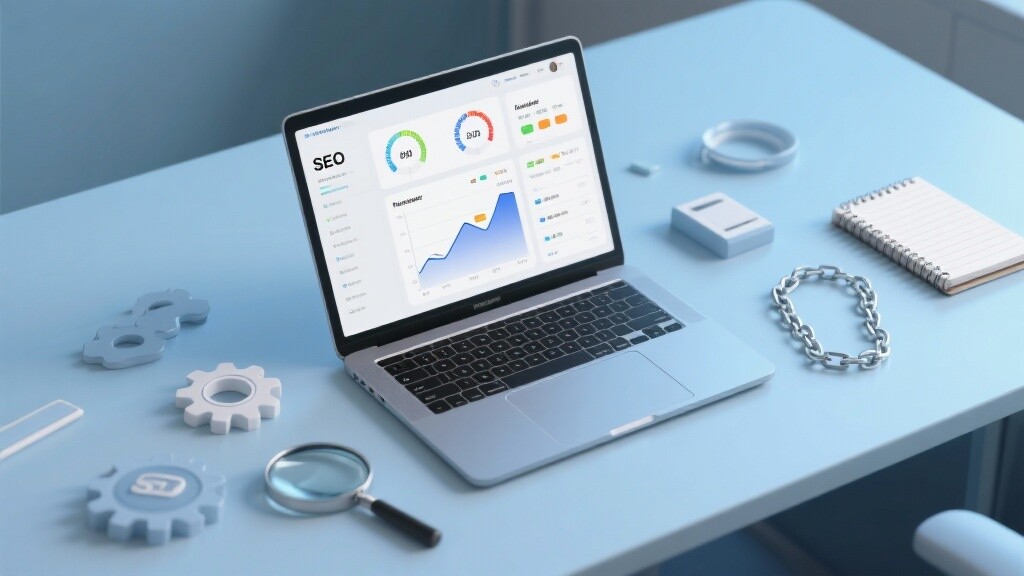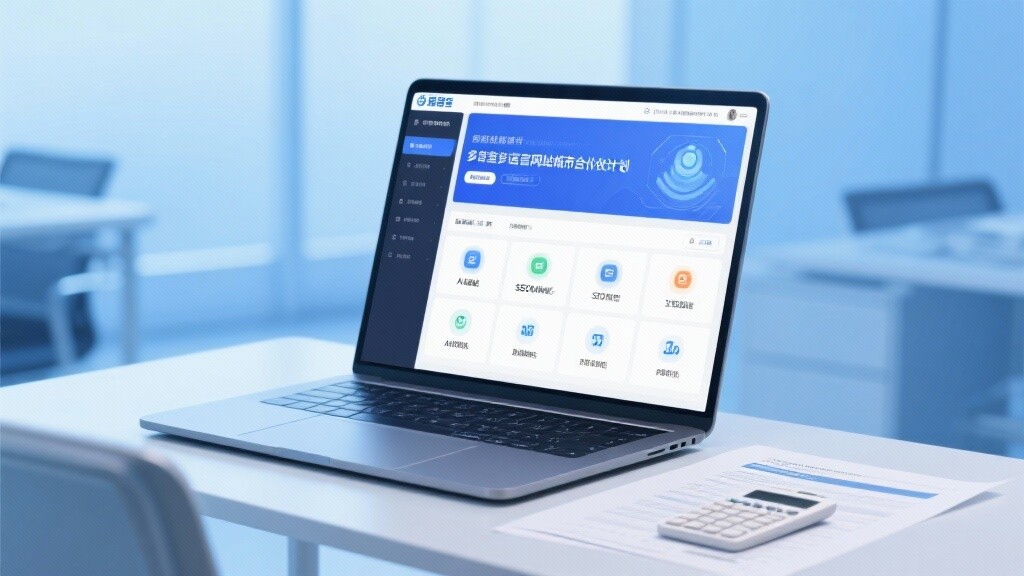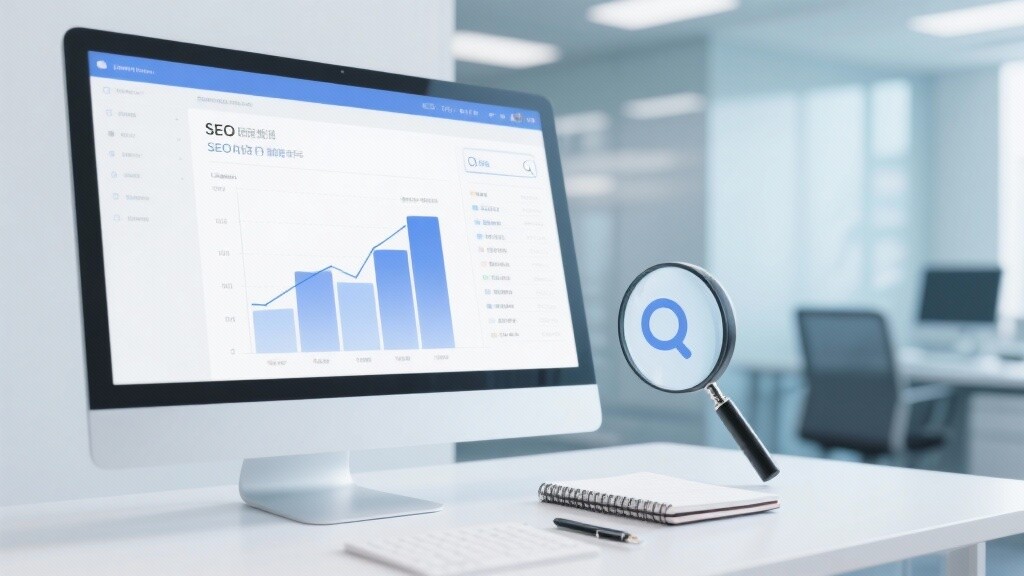EasyStore Cloud Intelligent Website Marketing System Platform!
1. The core definition and panoramic strategic value of Google Marketing
1. The authoritative definition and composition of Google Marketing
Google Marketing refers to comprehensive digital marketing activities that leverage all of Google's tools and platforms to achieve brand exposure, traffic acquisition, lead generation, and sales conversion. It consists of three main pillars:
- **Google SEO:** Committed to obtaining **free, long-term, and stable natural search traffic**.
- **Google Ads (PPC):** Focused on acquiring **immediate, controlled, high-intent paid search traffic**.
- **Google Analytics 4 (GA4):** Dedicated to **cross-platform and cross-device data collection, attribution, and decision support**.
2. The three strategic values of Google marketing
A successful Google Marketing strategy can deliver the following key benefits:
- **Global traffic coverage:** Google dominates the global search engine market and is the only way for **international brands** to reach their target customers.
- **Full lifecycle coverage:** From **brand awareness (display ads, top-funnel content)** to **transaction conversions (search ads, landing pages),** we provide **comprehensive coverage** of the user purchase journey.
- **Data-driven efficiency:** Leverage GA4 and Ads' AI-powered smart bidding to achieve refined operations that **achieve the highest ROI at the lowest cost**.
3. The development history and technology integration of Google Marketing
Early 2000s: Marketing primarily focused on standalone AdWords (later renamed Ads) and simple SEO optimization. Mid-2010s: Google began emphasizing content quality, mobile-first strategies, and user experience. SEO and PPC began to converge. Modern (2020s to present): Google Marketing has entered the era of AI and automation. Performance Maximizing Ads (PMax), AI-driven SEO content generation, and GA4's event-driven model signify the transformation of marketing into a highly technical and data-driven discipline.
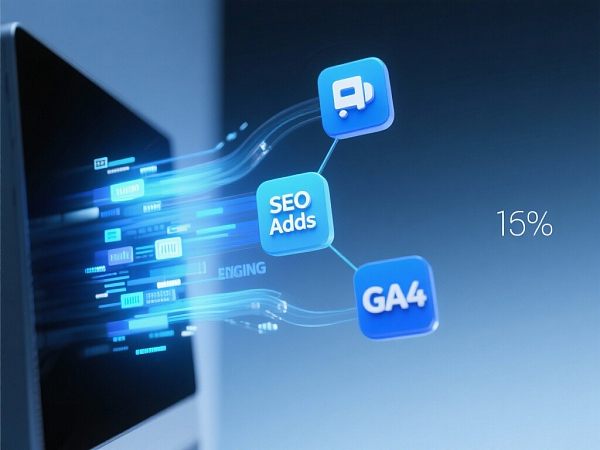
2. Five core technologies of Google Marketing: Driving traffic and conversion
The underlying technical principles of **Google Marketing** are composed of SEO algorithms and Ads bidding systems:
1. EEAT Principles and Content Authority
Principle: Search engines determine organic search rankings by evaluating a website's experience, expertise, authoritativeness, and trustworthiness. Technical Application: Demonstrate your brand's expertise and reliability within your industry to Google through author attribution, high-quality backlink development, and detailed company disclosure.
2. Ad Quality Score and Relevance Principle
Principle: Google Ads ranking isn't purely based on the highest bid; it's the product of your bid and your Quality Score. Technical Application: By ensuring high relevance among keywords, ad copy, and landing pages, we can improve Quality Score, thereby reducing CPC and achieving efficient paid ranking.
3. Principles of GA4 event-driven data model
Principle: GA4 focuses on events rather than sessions, enabling more accurate measurement of all user interactions on websites and apps. Technical Application: Properly setting conversion events (such as button clicks and whitepaper downloads) provides high-quality training data for Google Ads' smart bidding, enabling automated optimization.
4. Core Web Vitals (CWV) optimization principles
Principle: Google uses CWV (LCP, FID, CLS) as a core ranking factor and landing page experience evaluation metric. Technical Application: Optimize server response time, image compression, and code loading to ensure fast website loading and smooth interaction. This is fundamental to improving SEO rankings and AdWords landing page quality scores.
5. Intent Matching and Keyword Clustering Principles
Principle: Whether it's SEO or PPC, the key to traffic acquisition lies in precisely matching user search intent. Technical Application: Cluster keywords based on informational intent, transactional intent, and navigational intent. Create targeted content or ad landing pages for users with different intents to maximize conversion efficiency.
3. 4 Technical Features and Practical Applications to Improve Google Marketing Efficiency
1. Technical Features: The Data Flywheel Effect of SEO and PPC
Key Features: The pinnacle of Google Marketing is the mutual promotion of SEO and PPC data. Application: Prioritize top-performing converting keywords from Google Ads for content creation and SEO optimization to achieve long-term organic traffic acquisition. Furthermore, leverage high-authority pages established through SEO as PPC landing pages to improve ad quality scores.
2. Application Practice: Fine-tuning Performance Maximization Ads (PMax)
Practice: PMax is an AI-powered automation tool for Google Ads. Application: Successful PMax campaigns rely on a high-quality asset set and audience signals. Consistently feeding PMax with high-quality images and video assets, as well as accurate first-party audience data from Google Ads, ensures the AI learns and optimizes towards the highest ROI.
3. Application Practice: Cross-Channel Attribution and LTV Measurement
Practice: Leverage GA4's data-driven attribution model to fairly assess the contributions of SEO, PPC, display advertising, social media, and other channels to final conversions. Application: Shift data analysis from first click to customer lifetime value (LTV) to guide budget allocation and avoid inadvertently cutting SEO investments with low conversion rates but high LTV.
4. Application Practice: Automated Schema Markup Deployment and Rich Snippets
Practice: Deploy structured data for FAQs, products, reviews, How-tos, and more. Application: Schema Markup significantly improves page visibility and click-through rate (CTR) in SERPs, effectively boosting SEO traffic and providing richer, more engaging ad extensions for paid ads.
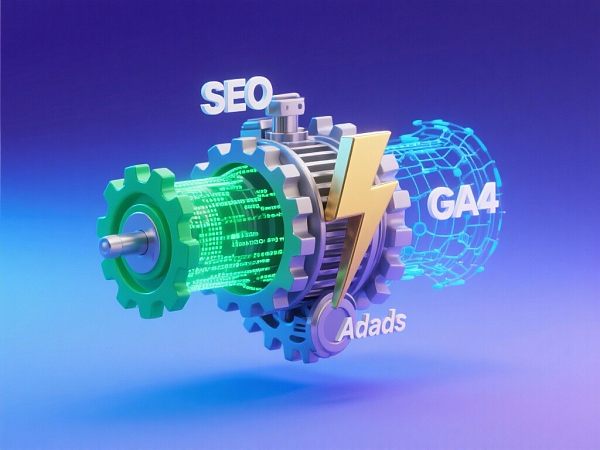
4. Different application scenarios and measurement systems of Google Marketing
1. Scenario 1: Cross-border e-commerce B2C
Application: Focus on transaction conversions with PMax and shopping ads, and drive traffic through product comparisons and tutorials with SEO blog content. Measurement: Core KPIs are ROAS (return on advertising spend) and conversion rate.
2. Scenario 2: B2B Software/Services
Application: Focus on industry authority and solution-oriented content with SEO (EEAT) and leverage Google Ads to target competitive and high-intent keywords. Measurement: Core KPIs include CPL (cost per lead), number of leads, and LTV.
3. Scenario 3: Local SEO
Application: Leverage Google My Business (GMB) to optimize local SEO, combined with localized search ads. Measurement: Core KPIs include GMB Map search impressions, phone calls, and store visit conversions.
5. Embrace full-stack Google marketing immediately to achieve continuous business growth!
Is your Google Marketing strategy still stuck in isolated SEO or inefficient PPC? You're missing out on the tremendous opportunities of AI automation, GA4 data empowerment, and cross-channel collaboration! Yiyingbao's team of experienced Google Marketing experts specializes in EEAT authority building, PMax intelligent delivery, CWV optimization, and GA4 advanced attribution. We can help you fully integrate your SEO and Ads strategies for maximum efficiency and lowest cost. Schedule a free Google Marketing Panorama Diagnosis today to get your global traffic growth and conversion improvement plan!
Click here to get your free copy of Google's Marketing Growth Blueprint!6. Frequently Asked Questions (FAQ)
1. In Google marketing, which is more important, SEO or Google Ads?
Answer: They're equally important and work in tandem. SEO focuses on long-term brand authority and low-cost traffic (long-term assets); Google Ads focuses on immediate, high-intent traffic and rapid validation of the business model (short-term growth). Successful Google Ads marketing requires investing in both, leveraging PPC data to inform SEO strategies.
2. How does GA4 help optimize Google Ads delivery efficiency?
Answer: GA4 uses an event-driven model to provide Google Ads with more accurate conversion data and audience signals than ever before. This enables Google Ads' smart bidding strategies (such as Target CPA and PMax) to learn more accurately and find high-value potential customers at a lower cost.
3. How to understand the practical application of EEAT in Google marketing?
Answer: EEAT is the cornerstone of trust. Applications include: 1) Website Disclosure: Show company credentials and contact details; 2) Content Expertise: Blogs and white papers signed by industry experts; 3) Link Building: Receive links from authoritative industry websites; 4) User Experience: Ensure your website is fast (with excellent CWV) and contains accurate and transparent content.
4. What is Performance Maximization (PMax) advertising? Is it the future trend?
Answer: PMax is an automated, goal-driven campaign in Google Ads that spans all Google channels, including Search, Display, Discovery, YouTube, Gmail, and Maps. It's a clear signal that Google is pushing AI-powered automated campaigns, a key trend in Google marketing going forward. However, it requires high-quality assets and data input to achieve optimal results.
7. Customer Reviews
Mr. Zhao, CEO of a cross-border SaaS software company
"Our Google Marketing strategy used to be separate for SEO and Ads. The Yiyingbao team helped us integrate GA4 data, creating a data flywheel effect for SEO and Ads. By feeding high-converting keywords from Ads back into SEO content and deploying PMax intelligent delivery, we increased overall inquiries by 40% and reduced CPL by 15%. This demonstrates the enormous potential of full-stack Google Marketing."
Ms. Sun, International B2C Apparel E-commerce Marketing Director
"E-Yingbao not only solved our website speed problem (CWV optimization), but more importantly, they guided us on **how to build EEAT**, significantly improving our brand authority. Now, our organic search traffic is growing steadily, and we are able to obtain high-quality paid traffic at **much lower CPC**, greatly optimizing **the overall ROI of Google Marketing**."
FAQ

Customer Reviews
 Beijing SEO Optimization Software in Action: How Can SMEs Quickly Improve Rankings?This article details the practical application of Beijing-based SEO optimization software to help small and medium-sized enterprises (SMEs) rapidly enhance search engine rankings. It covers core methodologies such as keyword strategy, content optimization, and technical SEO, leveraging the advantages of Yishengbao's intelligent website-building system to provide comprehensive SEO solutions for foreign trade independent websites.
Beijing SEO Optimization Software in Action: How Can SMEs Quickly Improve Rankings?This article details the practical application of Beijing-based SEO optimization software to help small and medium-sized enterprises (SMEs) rapidly enhance search engine rankings. It covers core methodologies such as keyword strategy, content optimization, and technical SEO, leveraging the advantages of Yishengbao's intelligent website-building system to provide comprehensive SEO solutions for foreign trade independent websites. Quick SEO Optimization: A Guide to Traffic Surge for Foreign Trade Independent WebsitesThis article details key steps for SEO optimization of foreign trade independent websites, including keyword research, technical optimization, content strategy, and link building, helping businesses quickly improve their website's ranking and traffic on overseas search engines.
Quick SEO Optimization: A Guide to Traffic Surge for Foreign Trade Independent WebsitesThis article details key steps for SEO optimization of foreign trade independent websites, including keyword research, technical optimization, content strategy, and link building, helping businesses quickly improve their website's ranking and traffic on overseas search engines. Multilingual Website City Partnership Recruitment – Earning Millions Annually Is No Longer a Dream!This article provides a detailed overview of EasyProfit's Multilingual Website City Partnership Program, covering agency support policies, income projections, technological advantages, and market prospects to help prospective partners fully understand the collaboration opportunities.
Multilingual Website City Partnership Recruitment – Earning Millions Annually Is No Longer a Dream!This article provides a detailed overview of EasyProfit's Multilingual Website City Partnership Program, covering agency support policies, income projections, technological advantages, and market prospects to help prospective partners fully understand the collaboration opportunities. SEO Optimization Tutorial: 10 Tips to Get Started Quickly Even for NewbiesThis article details 10 SEO optimization tips for newbies, covering keyword research, content optimization, technical SEO, and more, to help companies improve their website rankings and traffic.
SEO Optimization Tutorial: 10 Tips to Get Started Quickly Even for NewbiesThis article details 10 SEO optimization tips for newbies, covering keyword research, content optimization, technical SEO, and more, to help companies improve their website rankings and traffic.



